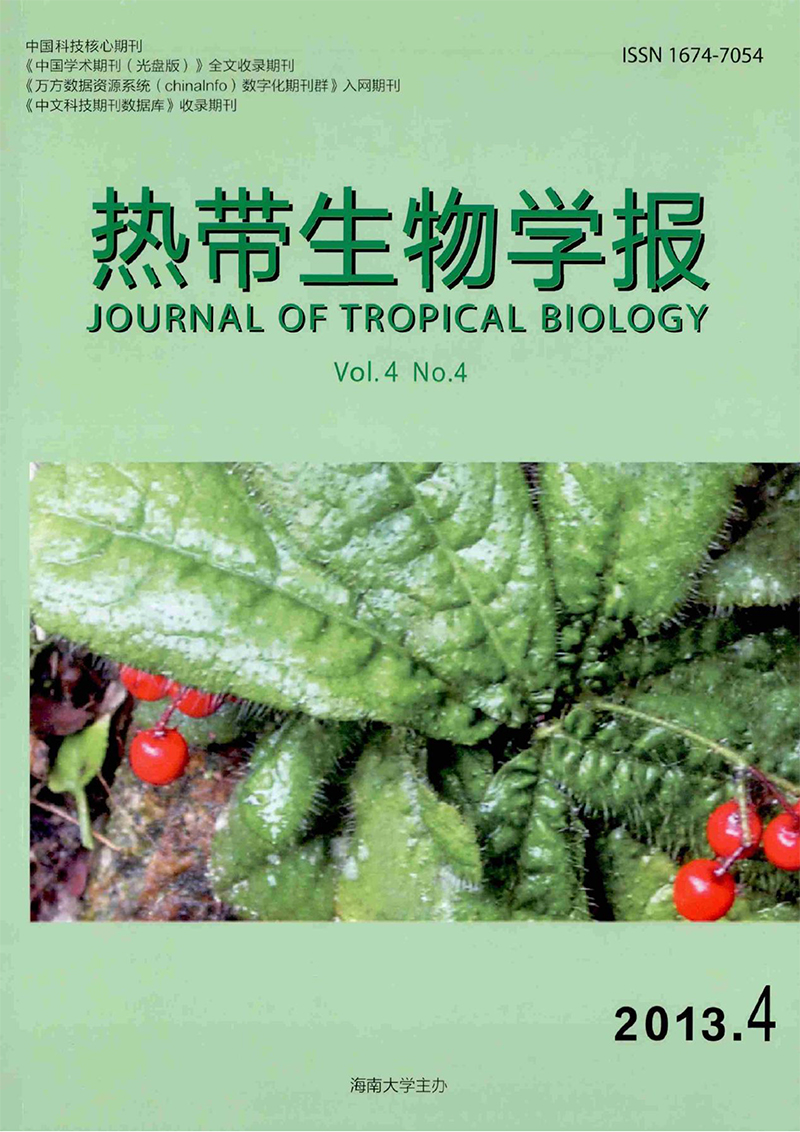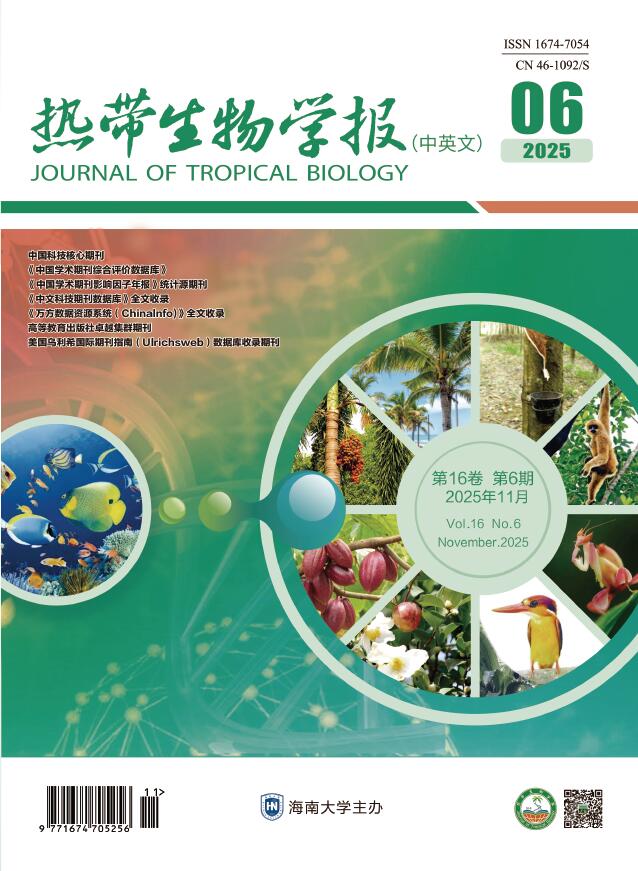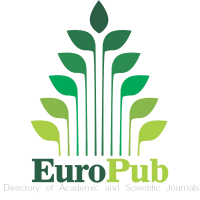2013 Vol. 4, No. 4
2013, 4(4): 303-307.
doi: 10.15886/j.cnki.rdswxb.2013.04.001
Abstract:
Total RNA was extracted from laticifers of Hevea brasiliensis,and total RNA was used to purify mRNA with MACHERY-NAGEL Purification of poly( A) RNA kit. The first strand cDNA was synthesized by reverse transcription of mRNA with SMART oligo-dT technique,and LD-PCR was performed to synthesize double strand cDNA. The double strand cDNA was then purified by running through a CHROMA SPINTM TE-400 column of clontech to select with ds cDNA molecules > 200 bp. Purified ds cDNA and lineared pGADT7-Rec were cotransformed into Y187 yeast strain to construct a yeast two-hybrid cDNA library of Hevea brasiliensis laticifers. The detection showed that the library contained 2. 8 × 107 independent clones,and that the titer of library was 4. 92 × 107·mL-1. The sizes of most inserts ranged from 500 to 2 000 bp in this library,and the recombination rate was 96%. These results showed that the library was suitable for yeast mating and can be used to screen interaction proteins.
Total RNA was extracted from laticifers of Hevea brasiliensis,and total RNA was used to purify mRNA with MACHERY-NAGEL Purification of poly( A) RNA kit. The first strand cDNA was synthesized by reverse transcription of mRNA with SMART oligo-dT technique,and LD-PCR was performed to synthesize double strand cDNA. The double strand cDNA was then purified by running through a CHROMA SPINTM TE-400 column of clontech to select with ds cDNA molecules > 200 bp. Purified ds cDNA and lineared pGADT7-Rec were cotransformed into Y187 yeast strain to construct a yeast two-hybrid cDNA library of Hevea brasiliensis laticifers. The detection showed that the library contained 2. 8 × 107 independent clones,and that the titer of library was 4. 92 × 107·mL-1. The sizes of most inserts ranged from 500 to 2 000 bp in this library,and the recombination rate was 96%. These results showed that the library was suitable for yeast mating and can be used to screen interaction proteins.
2013, 4(4): 308-312.
doi: 10.15886/j.cnki.rdswxb.2013.04.002
Abstract:
The OsRRM1 was identified by aligning the sequences of OS009387sat Oligo with the genes developed from heterosis microarray in rice. The results from gene structure showed that OsRRM1 contained three introns and four exons,and developed insertion / deletion( InDel) marker within the first intron. OsRRM1 was composed of transit peptide,acidic domain and RNA recognition motif. The QTLs related to traits such as tiller number,pollen fertility,plant height,etc,were mapped around OsRRM1 by some researchers. These studies laid foundation for studying the function of OsRRM1 and utilizing the InDel marker of OsRRM1 in rice.
The OsRRM1 was identified by aligning the sequences of OS009387sat Oligo with the genes developed from heterosis microarray in rice. The results from gene structure showed that OsRRM1 contained three introns and four exons,and developed insertion / deletion( InDel) marker within the first intron. OsRRM1 was composed of transit peptide,acidic domain and RNA recognition motif. The QTLs related to traits such as tiller number,pollen fertility,plant height,etc,were mapped around OsRRM1 by some researchers. These studies laid foundation for studying the function of OsRRM1 and utilizing the InDel marker of OsRRM1 in rice.
2013, 4(4): 313-316.
doi: 10.15886/j.cnki.rdswxb.2013.04.011
Abstract:
Browning is a restraint for mass propatation of sugarcane by tissue culture. For successful tissue culture of sugarcane it is very important to inhibit browning of sugarcane under tissue culture and make sure the tips of sugarcane stem grow and differentiate well. In this experiment axillary buds at different positions of stem sugarcane were used as explants and pretreated with different antioxidants,ie.,ascorbic acid( VitC),PVP, Na2S2O3 ·5H2O. The results showed that the axillary buds germinated from the young canes grew well and can be a good choice for explants,and that the pretreatment of the explants with VitC( 0. 75 g·L-1) controlled browning of sugarcane efficiently and did not give impacts on the growth of the explants.
Browning is a restraint for mass propatation of sugarcane by tissue culture. For successful tissue culture of sugarcane it is very important to inhibit browning of sugarcane under tissue culture and make sure the tips of sugarcane stem grow and differentiate well. In this experiment axillary buds at different positions of stem sugarcane were used as explants and pretreated with different antioxidants,ie.,ascorbic acid( VitC),PVP, Na2S2O3 ·5H2O. The results showed that the axillary buds germinated from the young canes grew well and can be a good choice for explants,and that the pretreatment of the explants with VitC( 0. 75 g·L-1) controlled browning of sugarcane efficiently and did not give impacts on the growth of the explants.
2013, 4(4): 317-321.
doi: 10.15886/j.cnki.rdswxb.2013.04.012
Abstract:
An experiment was made to optimize cultivation of the rape Hanyou 9( Brassica napus),and a quadratic orthogonal rotation combination design with 5 factors including sowing date,density,supplement of nitrogen,supplement of phosphorus,supplement of potash was arranged to observe the effect of the factors on the yield of Hanyou 9. The results showed that the 5 factors gave different effect on the yield of Hanyou 9 in the order of supplement of nitrogen > potash > sowing date > phosphorus > density. Analysis of the relationship between the factors and yield showed that the rape yielded the highest when treated with nitrogen fertilizer at a rate of 167. 85 kg·hm-2,with phosphorus fertilizer at a rate of 96. 6 kg·hm-2,or with potash fertilizer at a rate of 75. 6 kg·hm-2,or in the sowing date of September 11,or with the density of 12. 30 ten thousand plants·hm-2. Computer simulation revealed that 93 optimal sets of cultural patterns gave rapeseed yield ≥3 150 kg·hm-2,with their cultural measures being that the rape is planted at the density of 11. 70-12. 30 ten thousand plants·hm-2,and applied with fertilizer of nitrogen at a rate of 174-186 kg·hm-2,phosphorus at 85. 95-94. 05 kg·hm-2,and potash at 84. 90-95. 10 kg·hm-2.
An experiment was made to optimize cultivation of the rape Hanyou 9( Brassica napus),and a quadratic orthogonal rotation combination design with 5 factors including sowing date,density,supplement of nitrogen,supplement of phosphorus,supplement of potash was arranged to observe the effect of the factors on the yield of Hanyou 9. The results showed that the 5 factors gave different effect on the yield of Hanyou 9 in the order of supplement of nitrogen > potash > sowing date > phosphorus > density. Analysis of the relationship between the factors and yield showed that the rape yielded the highest when treated with nitrogen fertilizer at a rate of 167. 85 kg·hm-2,with phosphorus fertilizer at a rate of 96. 6 kg·hm-2,or with potash fertilizer at a rate of 75. 6 kg·hm-2,or in the sowing date of September 11,or with the density of 12. 30 ten thousand plants·hm-2. Computer simulation revealed that 93 optimal sets of cultural patterns gave rapeseed yield ≥3 150 kg·hm-2,with their cultural measures being that the rape is planted at the density of 11. 70-12. 30 ten thousand plants·hm-2,and applied with fertilizer of nitrogen at a rate of 174-186 kg·hm-2,phosphorus at 85. 95-94. 05 kg·hm-2,and potash at 84. 90-95. 10 kg·hm-2.
Effects of Different Substrates on Seed Germination and Seedling Growth of Firmiana pulcherrima Hsue
2013, 4(4): 322-326.
doi: 10.15886/j.cnki.rdswxb.2013.04.015
Abstract:
Firmiana pulcherrima Hsue is a plant of genus Erythropsis in family Sterculiaceae,and it is of high ornamental value for landscaping in urban garden and greening. F. pulcherrima Hsue was cultured on seven different substrates: sand,loam,coconut coir,sand + loam( 1 ∶ 1),sand + coconut coir( 1 ∶ 1),loam + coconut coir( 1 ∶ 1) sand + loam + coconut coir( 1 ∶ 1 ∶ 1) to investigate the influence of the substrates on the seed germination and seeding growth of F. pulcherrima Hsue for selection of optimum substrate for F. pulcherrima Hsue. The results showed seeds cultured on the sand gave a germination rate and a germination vigor of up to 55. 6% and 66. 7%,respectively,but had a lower seedling survival rate with retarded seedling height and root growth; that the loam treatment gave the lowest seed germination rate and germination vigor; that the coconut coir treatment improved the seedling survival( as high as 61. 1%),and that the mixed substrate sand + loam + coconut coir( 1 ∶ 1 ∶ 1) had optimum seed germination rate and vigor and seedling growth rate with high seedling height and well-developed roots. It is concluded that the mixed substrate is optimum for culture of seedlings of F. pulcherrima Hsue.
Firmiana pulcherrima Hsue is a plant of genus Erythropsis in family Sterculiaceae,and it is of high ornamental value for landscaping in urban garden and greening. F. pulcherrima Hsue was cultured on seven different substrates: sand,loam,coconut coir,sand + loam( 1 ∶ 1),sand + coconut coir( 1 ∶ 1),loam + coconut coir( 1 ∶ 1) sand + loam + coconut coir( 1 ∶ 1 ∶ 1) to investigate the influence of the substrates on the seed germination and seeding growth of F. pulcherrima Hsue for selection of optimum substrate for F. pulcherrima Hsue. The results showed seeds cultured on the sand gave a germination rate and a germination vigor of up to 55. 6% and 66. 7%,respectively,but had a lower seedling survival rate with retarded seedling height and root growth; that the loam treatment gave the lowest seed germination rate and germination vigor; that the coconut coir treatment improved the seedling survival( as high as 61. 1%),and that the mixed substrate sand + loam + coconut coir( 1 ∶ 1 ∶ 1) had optimum seed germination rate and vigor and seedling growth rate with high seedling height and well-developed roots. It is concluded that the mixed substrate is optimum for culture of seedlings of F. pulcherrima Hsue.
2013, 4(4): 327-331.
doi: 10.15886/j.cnki.rdswxb.2013.04.010
Abstract:
Bacterial leaf blight is a destructive disease of Anthurium spp. This disease,caused by Xanthomonas, Pseudomonas or Erwinia,had a major impact on the production of Anthurium industry in China. Pathogens were isolated from the leaves of Anthurium andraenum infected with Bacterial leaf blight at the Anthurium nursery in Hainan,China. The pathogens were purified for morphological observation,biochemical determination of pathogenic characteristics,and specific bacterial ABC transporter gene analysis. The results showed that the isolated pathogens were Xanthomonas axonopodis.
Bacterial leaf blight is a destructive disease of Anthurium spp. This disease,caused by Xanthomonas, Pseudomonas or Erwinia,had a major impact on the production of Anthurium industry in China. Pathogens were isolated from the leaves of Anthurium andraenum infected with Bacterial leaf blight at the Anthurium nursery in Hainan,China. The pathogens were purified for morphological observation,biochemical determination of pathogenic characteristics,and specific bacterial ABC transporter gene analysis. The results showed that the isolated pathogens were Xanthomonas axonopodis.
2013, 4(4): 332-334,346.
doi: 10.15886/j.cnki.rdswxb.2013.04.017
Abstract:
Python molurus,as a large nonvenomous python species found in many tropical and subtropical forests,has been farmed for its high value in fine skin,nutrition and medicine in recent years. But pneumonia,the most serious and the most common disease of python,has caused death of python at a high rate. Blood sample was collected from a farmed Burmese python( Python molurus bivittatus) with pneumonia to determine the pathogens of pneumonia. The specimens were incubated at 33 ℃ for 48 h to produce colony growth under the aerobic condition or with 5% CO2 in bacterial,actinomycetal and fungal mediums,separately. The isolated colonies were then characterized by gram staining and resorted to 16S rRNA gene sequencing and GenBank BLAST. The result showed that the isolates from the python was identified to be Klebsiella pneumonia.
Python molurus,as a large nonvenomous python species found in many tropical and subtropical forests,has been farmed for its high value in fine skin,nutrition and medicine in recent years. But pneumonia,the most serious and the most common disease of python,has caused death of python at a high rate. Blood sample was collected from a farmed Burmese python( Python molurus bivittatus) with pneumonia to determine the pathogens of pneumonia. The specimens were incubated at 33 ℃ for 48 h to produce colony growth under the aerobic condition or with 5% CO2 in bacterial,actinomycetal and fungal mediums,separately. The isolated colonies were then characterized by gram staining and resorted to 16S rRNA gene sequencing and GenBank BLAST. The result showed that the isolates from the python was identified to be Klebsiella pneumonia.
2013, 4(4): 335-341.
doi: 10.15886/j.cnki.rdswxb.2013.04.018
Abstract:
Methallyl isothiocyanate( MITC) were extracted from the seeds of mustard( Brassica juncea),a cruciferous plant,which grows in Hainan Province,China. The inhibition effect of MITC on proliferation of k562 cells was determined by a MTT assay,and the cell morphology was observed by using Wright-giemsa,DAPI and Rodanmin 123 staining. MITC showed a concentration-response relationship with k562 cells in cell proliferation in vitro. The k562 cells were inhibited at the highest rate( 87. 5 ± 1. 4) % when treated with the MITC at 120 μmol·L-1 for 96 h. The k562 cells treated with MITC for 24,48,72,96,120 h gave respective IC50 of 250. 007,100. 584,39. 030,54. 701,88. 719 μmol L-1. And the cells shrank with nuclear chromatin condensation,nuclear inward depression and low mitochondrial potential. These morphological changes suggest that k562 cell apoptosis were induced by MITC.
Methallyl isothiocyanate( MITC) were extracted from the seeds of mustard( Brassica juncea),a cruciferous plant,which grows in Hainan Province,China. The inhibition effect of MITC on proliferation of k562 cells was determined by a MTT assay,and the cell morphology was observed by using Wright-giemsa,DAPI and Rodanmin 123 staining. MITC showed a concentration-response relationship with k562 cells in cell proliferation in vitro. The k562 cells were inhibited at the highest rate( 87. 5 ± 1. 4) % when treated with the MITC at 120 μmol·L-1 for 96 h. The k562 cells treated with MITC for 24,48,72,96,120 h gave respective IC50 of 250. 007,100. 584,39. 030,54. 701,88. 719 μmol L-1. And the cells shrank with nuclear chromatin condensation,nuclear inward depression and low mitochondrial potential. These morphological changes suggest that k562 cell apoptosis were induced by MITC.
2013, 4(4): 342-346.
doi: 10.15886/j.cnki.rdswxb.2013.04.003
Abstract:
Termites Indotermes isodentatus’ s varietas living in Pterocarpus indicus Willd were collected in Hainan to isolate cellulase producing bacteria from the intestinal tract of the termites. A bacterial strain producing cellulase was screened by selective culture with CMC-Na as the only source of carbon. This bacterial strain was preliminarily identified to be under Bacillus. The cellulase produced from the bacteria strain showed an activity of( 7. 813 ±0. 340) U·mL-1 when the strain was cultured for 48h.
Termites Indotermes isodentatus’ s varietas living in Pterocarpus indicus Willd were collected in Hainan to isolate cellulase producing bacteria from the intestinal tract of the termites. A bacterial strain producing cellulase was screened by selective culture with CMC-Na as the only source of carbon. This bacterial strain was preliminarily identified to be under Bacillus. The cellulase produced from the bacteria strain showed an activity of( 7. 813 ±0. 340) U·mL-1 when the strain was cultured for 48h.
2013, 4(4): 347-353.
doi: 10.15886/j.cnki.rdswxb.2013.04.004
Abstract:
For the study of alien invasive plant Lantana camara invasive mechanism,the quadrat sampling method was used to investigate and analyze the plant composition,plant life form,plant diversity,richness,evenness and similarity of the community in different habitats in Hainan Island. The results showed that there are about 75 species,belonging to 31 families and 66 genera in the community. Most of the species are unde the families Compositae,Gramineae and Papilionaceae. Raunkaer’s life forms are mainly phaenerophytes,chamaephytes, hemicryptophytes and therophytes. Phaenerophytes had a higher proportion when the disturbance is lower. The range of the plant species diversity indices was 0. 445 2- 1. 832 0,the range of the plant species richness indices was 1. 811 6- 2. 219 9,and the range of evenness was 0. 157 1- 0. 759 7. The community similarity coefficient was lower than 0. 5,the highest only being 0. 347 8,indicating that the species composition of the community was decentralized relatively and that the community was still in the early stages of development and was stable yet.
For the study of alien invasive plant Lantana camara invasive mechanism,the quadrat sampling method was used to investigate and analyze the plant composition,plant life form,plant diversity,richness,evenness and similarity of the community in different habitats in Hainan Island. The results showed that there are about 75 species,belonging to 31 families and 66 genera in the community. Most of the species are unde the families Compositae,Gramineae and Papilionaceae. Raunkaer’s life forms are mainly phaenerophytes,chamaephytes, hemicryptophytes and therophytes. Phaenerophytes had a higher proportion when the disturbance is lower. The range of the plant species diversity indices was 0. 445 2- 1. 832 0,the range of the plant species richness indices was 1. 811 6- 2. 219 9,and the range of evenness was 0. 157 1- 0. 759 7. The community similarity coefficient was lower than 0. 5,the highest only being 0. 347 8,indicating that the species composition of the community was decentralized relatively and that the community was still in the early stages of development and was stable yet.
2013, 4(4): 354-361,400.
doi: 10.15886/j.cnki.rdswxb.2013.04.005
Abstract:
The average cluster method( UPGMA) was used to analyze the horizontal distribution of Ardisia plants in the cities or counties of Hainan Island. As a result,the central region of Hainan Island is the most abundant area for Ardisia,especially in Baoting County. The vertical distribution of Ardisia was concentrated in the altitudes ranging from 400 to 1 000 m,and 7 species were distributed narrowly. Ardisia was distributed in two types and two subtypes,but mainly in the subtype from Vietnam( or Indo-Chinese Peninsula) to S. China( or SW. China),followed by the type of Endemic to China. The Ardisia plants in Hainan Island had close relationships with those in the neighboring provinces Guangdong and Guangxi,the most similar to those in Guangdong and the most common with those in Guangxi. The Ardisia plants in Hainan Island had significant relation with those in the neighboring area of Indo-Chinese peninsula,but not obvious relation with those in Malaysia.
The average cluster method( UPGMA) was used to analyze the horizontal distribution of Ardisia plants in the cities or counties of Hainan Island. As a result,the central region of Hainan Island is the most abundant area for Ardisia,especially in Baoting County. The vertical distribution of Ardisia was concentrated in the altitudes ranging from 400 to 1 000 m,and 7 species were distributed narrowly. Ardisia was distributed in two types and two subtypes,but mainly in the subtype from Vietnam( or Indo-Chinese Peninsula) to S. China( or SW. China),followed by the type of Endemic to China. The Ardisia plants in Hainan Island had close relationships with those in the neighboring provinces Guangdong and Guangxi,the most similar to those in Guangdong and the most common with those in Guangxi. The Ardisia plants in Hainan Island had significant relation with those in the neighboring area of Indo-Chinese peninsula,but not obvious relation with those in Malaysia.
2013, 4(4): 362-364.
doi: 10.15886/j.cnki.rdswxb.2013.04.014
Abstract:
Piper sarmentosum,a new tropical spice plant,is usually consumed as a local vegetable by the local ethnic group in Hainan,China. In order to have a good picture of the nutritional value of this plant,nutritional components such as vitamins,proteins,amino acids and mineral elements in P. sarmentosum were determined by using the National Standard methods. The results showed that P. sarmentosum is rich in vitamins,proteins, amino acids and mineral elements,especially the contents of calcium,iron,zinc,manganese and strontium being very high. Thus,P. sarmentosum has a high healthcare value and a very broad prospect for development.
Piper sarmentosum,a new tropical spice plant,is usually consumed as a local vegetable by the local ethnic group in Hainan,China. In order to have a good picture of the nutritional value of this plant,nutritional components such as vitamins,proteins,amino acids and mineral elements in P. sarmentosum were determined by using the National Standard methods. The results showed that P. sarmentosum is rich in vitamins,proteins, amino acids and mineral elements,especially the contents of calcium,iron,zinc,manganese and strontium being very high. Thus,P. sarmentosum has a high healthcare value and a very broad prospect for development.
2013, 4(4): 365-368.
doi: 10.15886/j.cnki.rdswxb.2013.04.006
Abstract:
The electrophoresis mobility shift assay( EMSA) is a standard technique for studying the interaction between proteins and DNA. The progress and advantages and disadvantages of the EMSA technology were briefly analyzed,based on which experiments were designed to improve the EMSA protocol for routine application. A set of quick,convenient and affordable EMSA experimental methods were explored and summarized through combination of Femu2p-C2H2 protein and TTGGGT Box including its mutants testing. This method can be used for specific competitive interaction and response analysis of DNA-binding protein and DNA binding sequence.
The electrophoresis mobility shift assay( EMSA) is a standard technique for studying the interaction between proteins and DNA. The progress and advantages and disadvantages of the EMSA technology were briefly analyzed,based on which experiments were designed to improve the EMSA protocol for routine application. A set of quick,convenient and affordable EMSA experimental methods were explored and summarized through combination of Femu2p-C2H2 protein and TTGGGT Box including its mutants testing. This method can be used for specific competitive interaction and response analysis of DNA-binding protein and DNA binding sequence.
2013, 4(4): 369-373.
doi: 10.15886/j.cnki.rdswxb.2013.04.016
Abstract:
A method for rapid determination of the concentration of inactivated vaccine against the bacteria, Streptococcus agalactiae was established by spectrophotometry. At the wavelength of 600 nm both physiological saline and inactivated vaccine showed smooth absorbance change and no characteristic absorption peak wavelength. The A600 value( X) was positively correlated with the concentration of the vaccine( Y)( r = 0. 998 3, df = 6,P < 0. 01),as revealed by the equation y = 11. 277x- 2. 022 9; the A600 value of vaccine remained stable when it was inactivated by 0. 4% formaldehyde for 3 h. The determination was repeated by 4 laboratory technicians,and the results showed the A600 value was in accordance with the above correlation equation and its RSD ranged between 0. 5% —1. 2%. This indicates that this method for determination of the concentration of inactivated vaccine against the bacteria was very stable,repeatable,easy to handle and rapid.
A method for rapid determination of the concentration of inactivated vaccine against the bacteria, Streptococcus agalactiae was established by spectrophotometry. At the wavelength of 600 nm both physiological saline and inactivated vaccine showed smooth absorbance change and no characteristic absorption peak wavelength. The A600 value( X) was positively correlated with the concentration of the vaccine( Y)( r = 0. 998 3, df = 6,P < 0. 01),as revealed by the equation y = 11. 277x- 2. 022 9; the A600 value of vaccine remained stable when it was inactivated by 0. 4% formaldehyde for 3 h. The determination was repeated by 4 laboratory technicians,and the results showed the A600 value was in accordance with the above correlation equation and its RSD ranged between 0. 5% —1. 2%. This indicates that this method for determination of the concentration of inactivated vaccine against the bacteria was very stable,repeatable,easy to handle and rapid.
2013, 4(4): 374-380.
doi: 10.15886/j.cnki.rdswxb.2013.04.013
Abstract:
The immature seeds of Dendrobium officinale Kimura et Migo were used as explants. The explants were cultured on media supplemented with such factors as coconut water( CW),potato puree and NAA( all with different concentrations) to investigate the effect of these factors on proliferation culture of D. officinale Kimura et Migo. The explants cultured on 1 /2 MS + φ( CW) = 10% + NAA 0. 1 mg L-1 produced most protocom-like bodies with a multiplication coefficient being as high as 145. 28. The plantlets were not sensitive to the changes of the concentrations of exogenous auxins,such as IBA,NAA and IAA at the stage of invigorating culture,and no obvious difference was observed in plant growth vigor in the treatments at the concentrations ranging from 0 to 2. 50 mg L-1 . However,the plantlets treated with IBA at 0. 75 mg·L-1or NAA at 0. 5 mg·L-1 grew better in vigor and uniform among individuals. The plantlets cultured on the rooting medium 1 /2 MS supplemented with w = 10% banana puree and NAA 1. 0mg L-1 produced better roots and grew stronger.
The immature seeds of Dendrobium officinale Kimura et Migo were used as explants. The explants were cultured on media supplemented with such factors as coconut water( CW),potato puree and NAA( all with different concentrations) to investigate the effect of these factors on proliferation culture of D. officinale Kimura et Migo. The explants cultured on 1 /2 MS + φ( CW) = 10% + NAA 0. 1 mg L-1 produced most protocom-like bodies with a multiplication coefficient being as high as 145. 28. The plantlets were not sensitive to the changes of the concentrations of exogenous auxins,such as IBA,NAA and IAA at the stage of invigorating culture,and no obvious difference was observed in plant growth vigor in the treatments at the concentrations ranging from 0 to 2. 50 mg L-1 . However,the plantlets treated with IBA at 0. 75 mg·L-1or NAA at 0. 5 mg·L-1 grew better in vigor and uniform among individuals. The plantlets cultured on the rooting medium 1 /2 MS supplemented with w = 10% banana puree and NAA 1. 0mg L-1 produced better roots and grew stronger.
2013, 4(4): 381-385.
doi: 10.15886/j.cnki.rdswxb.2013.04.007
Abstract:
Several key technologies for establishing an efficient plant cell suspension are described,including selection of explants,identification of embryogenic callus and proper culture condition. Some problems and their solutions in plant cell suspension culture are also demonstrated to provide reference for the related research work.
Several key technologies for establishing an efficient plant cell suspension are described,including selection of explants,identification of embryogenic callus and proper culture condition. Some problems and their solutions in plant cell suspension culture are also demonstrated to provide reference for the related research work.
2013, 4(4): 386-392.
doi: 10.15886/j.cnki.rdswxb.2013.04.008
Abstract:
Transcription activator like effectors( TALEs) are injected via the type Ⅲ secretion pathway of many plant pathogenic Xanthomonas spp. into plant cells where they contribute to infection of disease or trigger resistance by binding to DNA and turning on TALEs-specific host genes. All TALEs are composed of an N-terminal translocation domain,central tandem repeat DNA binding domain,C-terminal nuclear localization signals and an acidic transcriptional activation domain. Advances in our understanding of TALEs and their targets have yielded new models for pathogen recognition and defense. Recent elucidation of the basis for specificity in DNA binding by TALEs expedites further discovery and opens the door to biotechnological applications. Here,we summarized the recent advances and prospects of TALEs technology with an emphasis on its structure and functions,as well as the transcription activator-like effector nucleases.
Transcription activator like effectors( TALEs) are injected via the type Ⅲ secretion pathway of many plant pathogenic Xanthomonas spp. into plant cells where they contribute to infection of disease or trigger resistance by binding to DNA and turning on TALEs-specific host genes. All TALEs are composed of an N-terminal translocation domain,central tandem repeat DNA binding domain,C-terminal nuclear localization signals and an acidic transcriptional activation domain. Advances in our understanding of TALEs and their targets have yielded new models for pathogen recognition and defense. Recent elucidation of the basis for specificity in DNA binding by TALEs expedites further discovery and opens the door to biotechnological applications. Here,we summarized the recent advances and prospects of TALEs technology with an emphasis on its structure and functions,as well as the transcription activator-like effector nucleases.
2013, 4(4): 393-400.
doi: 10.15886/j.cnki.rdswxb.2013.04.009
Abstract:
The research and development in systematics and genetic diversity of Ilex L. in the last 10 years were reviewed in this paper,including plant morphology,taxonomy,molecular phylogenetics,genetic diversity,etc.
The research and development in systematics and genetic diversity of Ilex L. in the last 10 years were reviewed in this paper,including plant morphology,taxonomy,molecular phylogenetics,genetic diversity,etc.
2013, 4(4): 401-406.
Abstract:



 Abstract
Abstract PDF 276KB
PDF 276KB



 Email alert
Email alert RSS
RSS